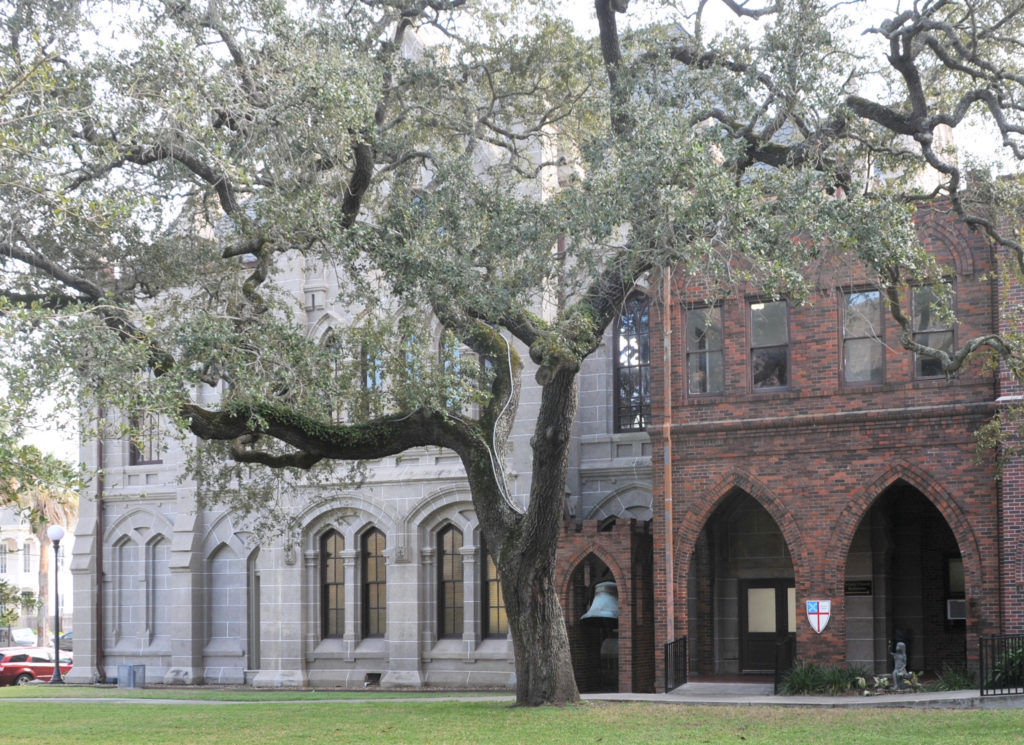Resilience Treatments & Strategies
Trees

Description
Large organic landscaping elements. Trees can contribute to your site’s significance (e.g., as part of a designed cultural landscape). However, they can also compromise the building’s resilience. Scenarios include the tree falling down, branches breaking off, or roots penetrating your building’s foundation. Some trees may be protected by local ordinances and you may need approval from city arborists to work on them. Some plants, such as palms, are technically not trees but can still pose a threat due to their size.
Typical risk factor of this component:
Low
Trees typically have a very high exposure to elements such as wind or rain. However, they have negligible importance to the structure’s stability and their failure generally has little impact on building assemblies.
Typical Damages from Floods or Hurricanes
- Uprooted trees (total/dead or partial/still alive)
- Downed branches
Other common conditions contributing to vulnerability towards floods or hurricanes
- Tree growing close to building, threatening foundations (as well as drains, sewers, and gas mains) or posing a risk to building from collapse or wind throw
Resilience Treatments and Strategies
In-house
Prune foliage and cut off small dead limbs from trees that are in immediate vicinity of building.
Add permanent anchoring elements to keep trees upright and in place.
Provide proper care for trees to keep them healthy and strong. Develop a plan for integrating new trees before older trees reach the end of their life
Professional needed [type]
Remove large dead limbs or entire trees that are in immediate vicinity of building [arborist]. Consider replacing damaged trees that are culturally significant or are necessary to retain soil [landscape architect].
Relocate trees in immediate vicinity of building [landscape architect].
Create historic landscape inventory and treatment plans to preserve, maintain, and treat culturally significant landscape elements (see also NPS Preservation Brief #36) [landscape architect].
Trees

Description
Large organic landscaping elements. Trees can contribute to your site’s significance (e.g., as part of a designed cultural landscape). However, they can also compromise the building’s resilience. Scenarios include the tree falling down, branches breaking off, or roots penetrating your building’s foundation. Some trees may be protected by local ordinances and you may need approval from city arborists to work on them. Some plants, such as palms, are technically not trees but can still pose a threat due to their size.
Typical risk factor of this component:
Low
Trees typically have a very high exposure to elements such as wind or rain. However, they have negligible importance to the structure’s stability and their failure generally has little impact on building assemblies.
Typical Damages from Floods or Hurricanes
- Uprooted trees (total/dead or partial/still alive)
- Downed branches
Other common conditions contributing to vulnerability towards floods or hurricanes
- Tree growing close to building, threatening foundations (as well as drains, sewers, and gas mains) or posing a risk to building from collapse or wind throw
Resilience Treatments and Strategies
In-house
Prune foliage and cut off small dead limbs from trees that are in immediate vicinity of building.
Add permanent anchoring elements to keep trees upright and in place.
Provide proper care for trees to keep them healthy and strong. Develop a plan for integrating new trees before older trees reach the end of their life
Professional needed [type]
Remove large dead limbs or entire trees that are in immediate vicinity of building [arborist]. Consider replacing damaged trees that are culturally significant or are necessary to retain soil [landscape architect].
Relocate trees in immediate vicinity of building [landscape architect].
Create historic landscape inventory and treatment plans to preserve, maintain, and treat culturally significant landscape elements (see also NPS Preservation Brief #36) [landscape architect].